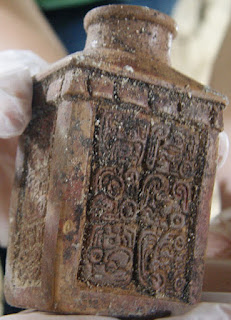 |
| Chichen Itza |
Is Chichen Itza one of the Maya’s most revered and renowned pyramid sites or a glorified shrine-museum concocted by slick politicians to reap tourist dollars, like Cancun? It’s no secret that the Mexico National Tourist Corporation (MNTC) designed Cancun with the intention of creating a luxury destination that would pull in coveted currency to fill state and government coffers—and if some spilled over into the private sector, so much the better.
BIRTH OF CANCUN
In 1967 the Mexico government’s aim was to find the best locale for an international tourist resort with the finest beaches, the most beautiful water, and the fewest hurricanes. Another requirement would be proximity to its wealthy northern neighbor, the US, so flight times would be minimal.
A strip of unpopulated sand at the northeast tip of the Yucatán Peninsula fit the bill—Cancun—a destination so easily accessible that at 9 a.m. one could be in New York and by noon, landing at Cancun International, moments away from a white sand beach and a pitcher of margaritas.
And with that very same intent, as early as the 1920s, long before Cancun was even a glimmer in MNTC’s eye, the Mexico government, along with help from the Carnegie Institution of Washington, was priming Chichen Itza to become Mexico’s first full-fledged tourist destination.
Fullbright scholar and former Assistant Professor of Anthopology at University of Washington, Quetzil Castañeda detailed this in his book, In the Museum of Maya Culture: Touring Chichen Itza. Through prolific research, Castaneda's book explains how it all came about.
TOURIST DESTINATION
Chichen Itza, translated as mouth at the well of the Itzas, had been a tourist destination for over five hundred years when MNTC and the Carnegie Institution hatched their plan. After being twice abandoned by both the Itzas (750 AD) and the Maya (1194 AD) the site became a pilgrimage spot for religious groups in the 1500s because of its sacred cenote. A tourist Mecca for centuries, Chichen Itza was a place the Maya came to pay homage to their gods.
 |
| Chichen Itza drawing by Frederick Catherwood |
Early explorers Edward H. Thompson and John Lloyd Stephens, artist Frederick Catherwood, along with others fueled the flames of discovery and from their explorations, the Yucatec and Hispanic elite, according to Castaneda, began to create a Maya myth or identity—distinctly different from that of either Spain or Mexico.
CITY OF FABLES
In the 1920s, the Mexico government organized excavations under its agency Monumento Prehispanicos, and permitted the Carnegie Institution of Washington, headed in the Yucatán by explorer Sylvanus Morley, to conduct ‘multi-disciplinary’ research in the Yucatán and to excavate and restore what Castaneda calls ‘a city of fables.’
In his book, Castañeda insists the main goal of the Carnegie Institution's Excavations Department was to create a tourist Mecca rather than to restore the site to its original state.
Castañeda believes not only do economic interests (from local to international levels) now compete at the site but different government agencies and levels of state jurisdictions also compete for the slice of Chichen Itza’s tourist pie.
Castañeda’s book maintains that the Maya civilization, although very real, has been ‘tweaked’ by competing government agencies to make the ‘reproduction’ of the archeological excavations more desirable to tourists.
In his book he calls Chichen Itza a museum exhibit which represents the Maya through the epochs. The exhibit implies the Maya came from ‘a primitive society or race’ and then rose to a high stature through the creation of the pyramids.
But Castañeda argues that the Maya are examined through ‘the eyes of European civilization,’ by which all civilizations are compared and judged.
In many ways, Castañeda’s views are similar to those of author Daniel Quinn in his controversial book, Ishmael, which divides the world into two camps: the takers—modern Western civilization—and the givers indigenous cultures.
Quinn’s premise is that Western man usurps indigenous cultures and these ethnic societies and their “myths” are then lost forever, so that the takers can impose their myth—science—onto the entire world.
Quinn equates this with the destruction of all indigenous societies. Castañeda’s book basically concurs with this premise, and in his lament for the Maya, calls what the state and government have done at Chichen Itza a “violation” against Mayan society, and goes so far as to call it on par with rape.
EQUINOX PHENOMENON
Castañeda theorizes the height of the deception takes place every vernal and autumnal equinox (roughly March 20, September 21) since 1974—when Mexico figured out these date were significant to the Maya.
Once word was out about the equinox display of light and shadow, Chichen Itza’s K’ukul’kan pyramid became a tourist magnet. Tourist numbers jumped thirty percent that year. A star was born.
In 1921, Yucatan Governor Felipe Carrillo Puerto signed an agreement with Carnegie Institution that gave Sylvanus Morley a renewable ten year permit to conduct scientific study at the ancient Maya city. Among the site projects, studies would be conducted in geology, botany, zoology, climatology agronomy, medicine, physical anthropology, linguistics, history, archeology, ethnography and sociology.
 |
| Felipe Carrillo Puerto |
"With Maya labor from nearby towns, the jungle was peeled back to reveal the ancient stones of decayed buildings. Chichen Itza was restored as a replica of itself and reconstructed into a life size model of an ancient Maya city.


































